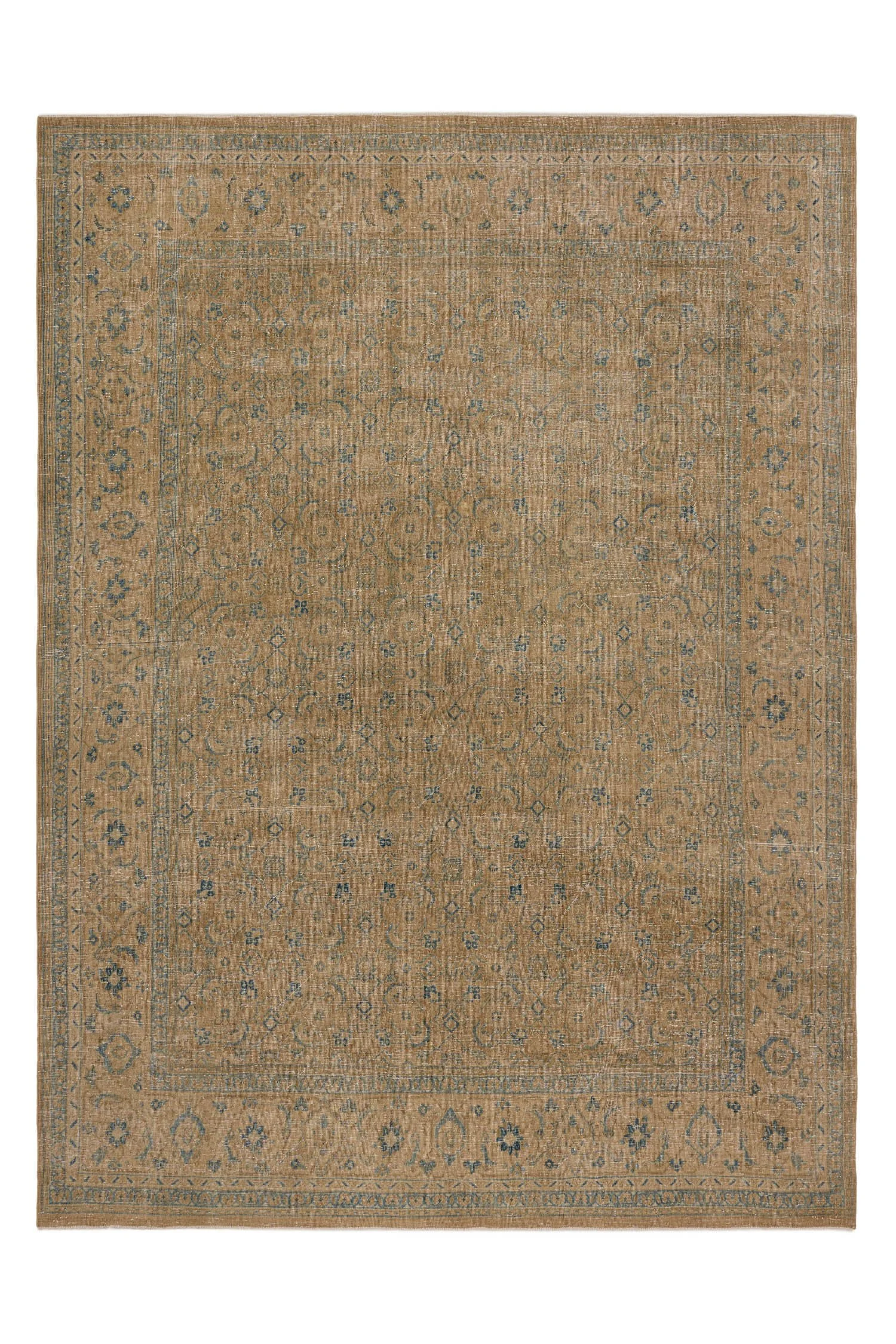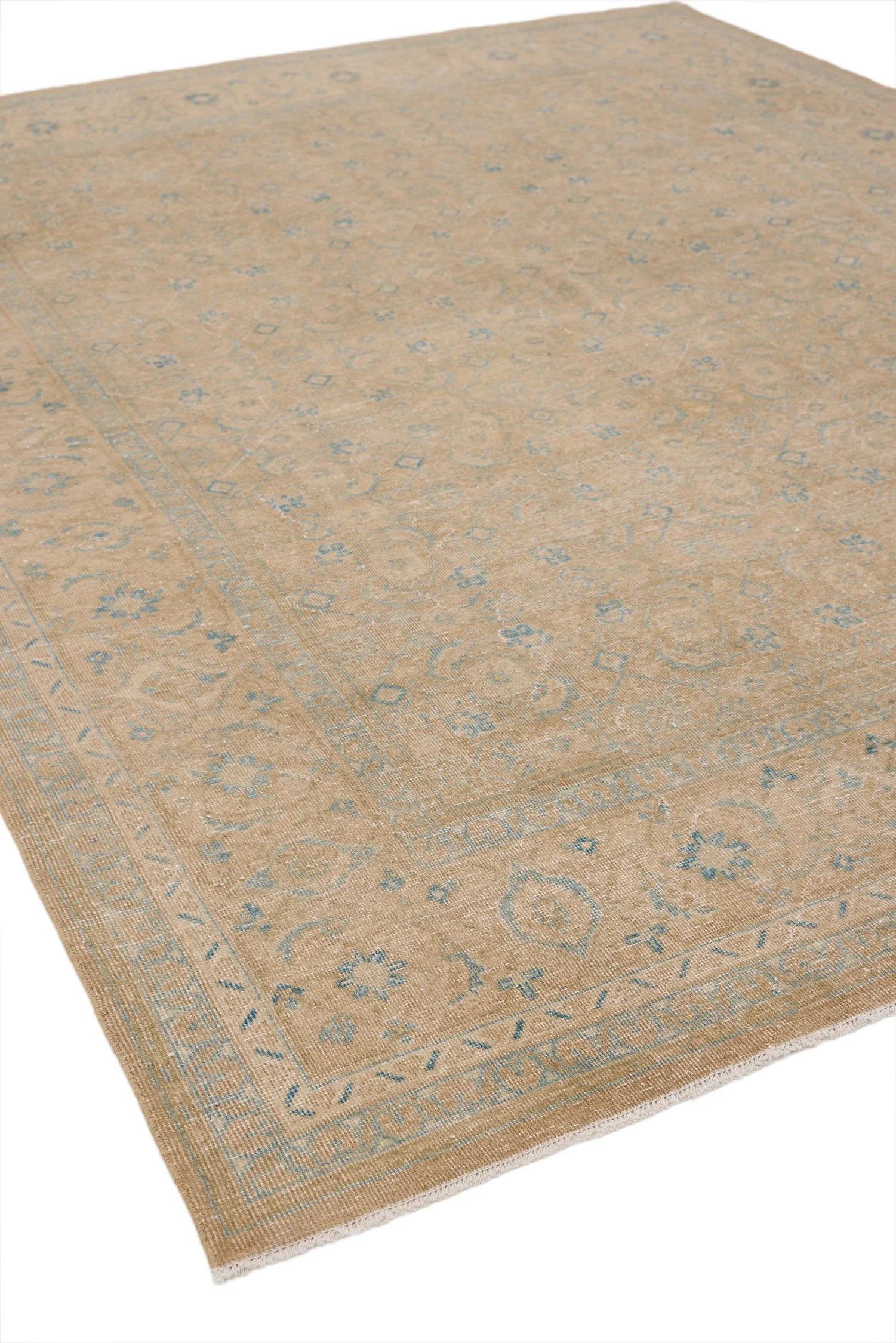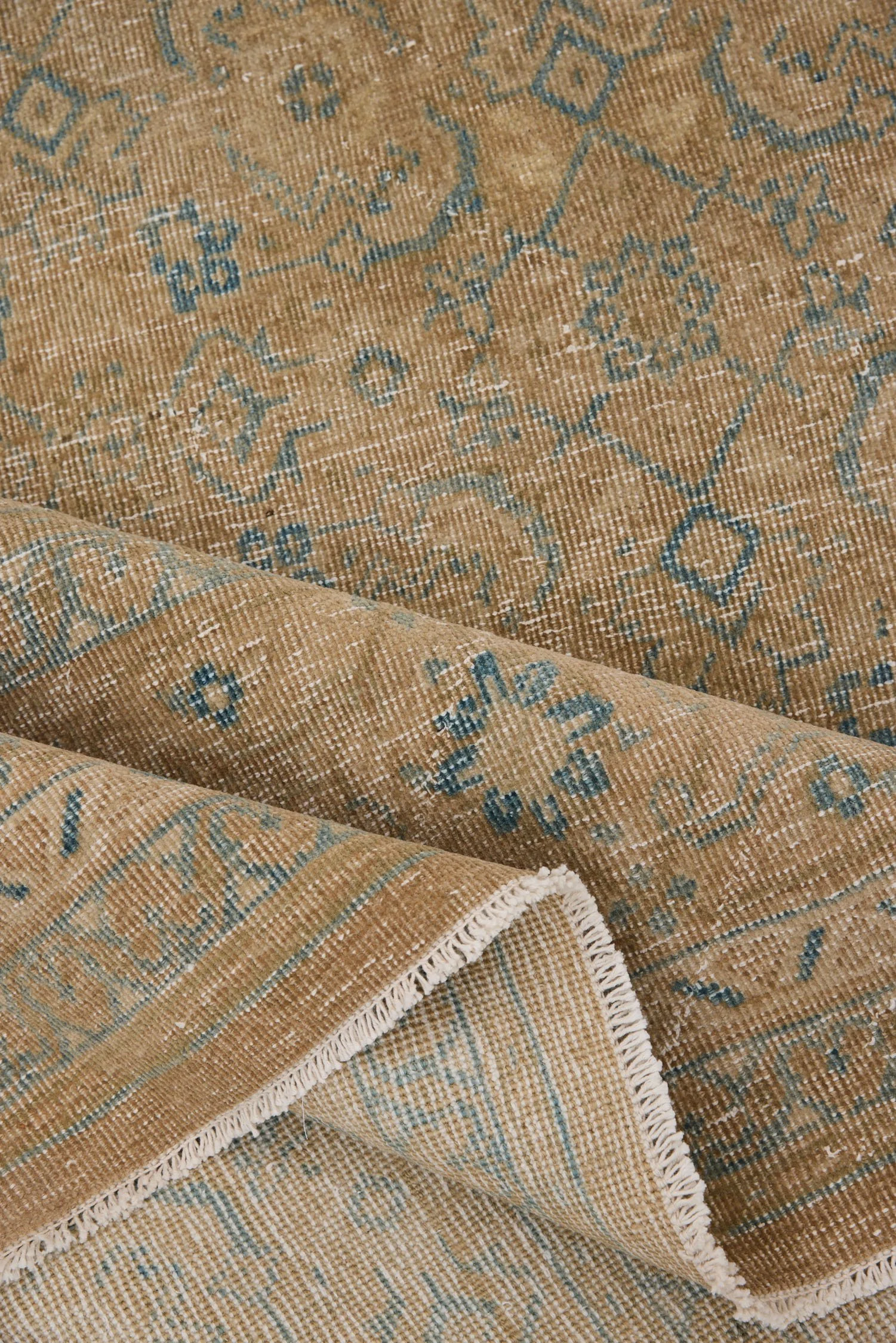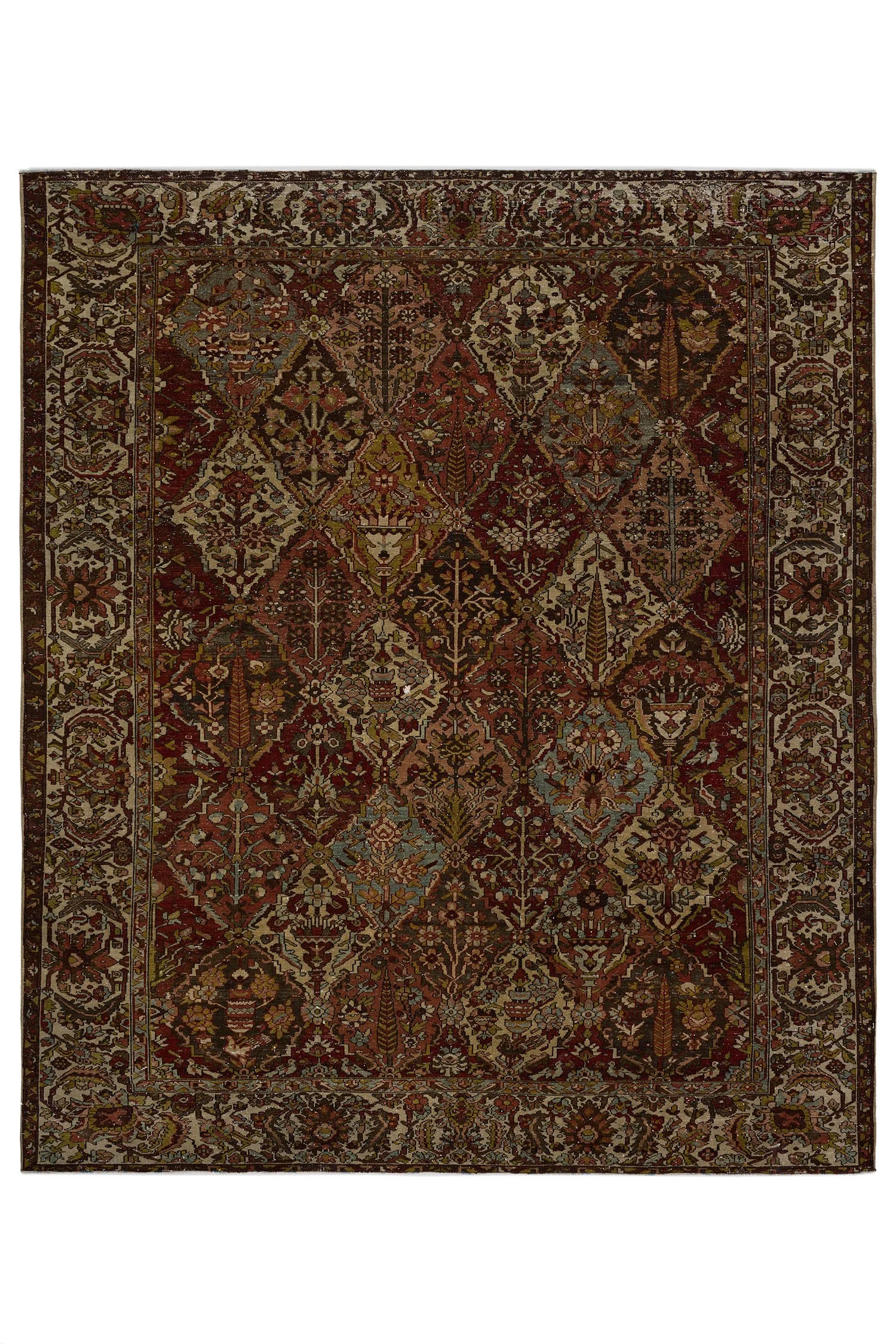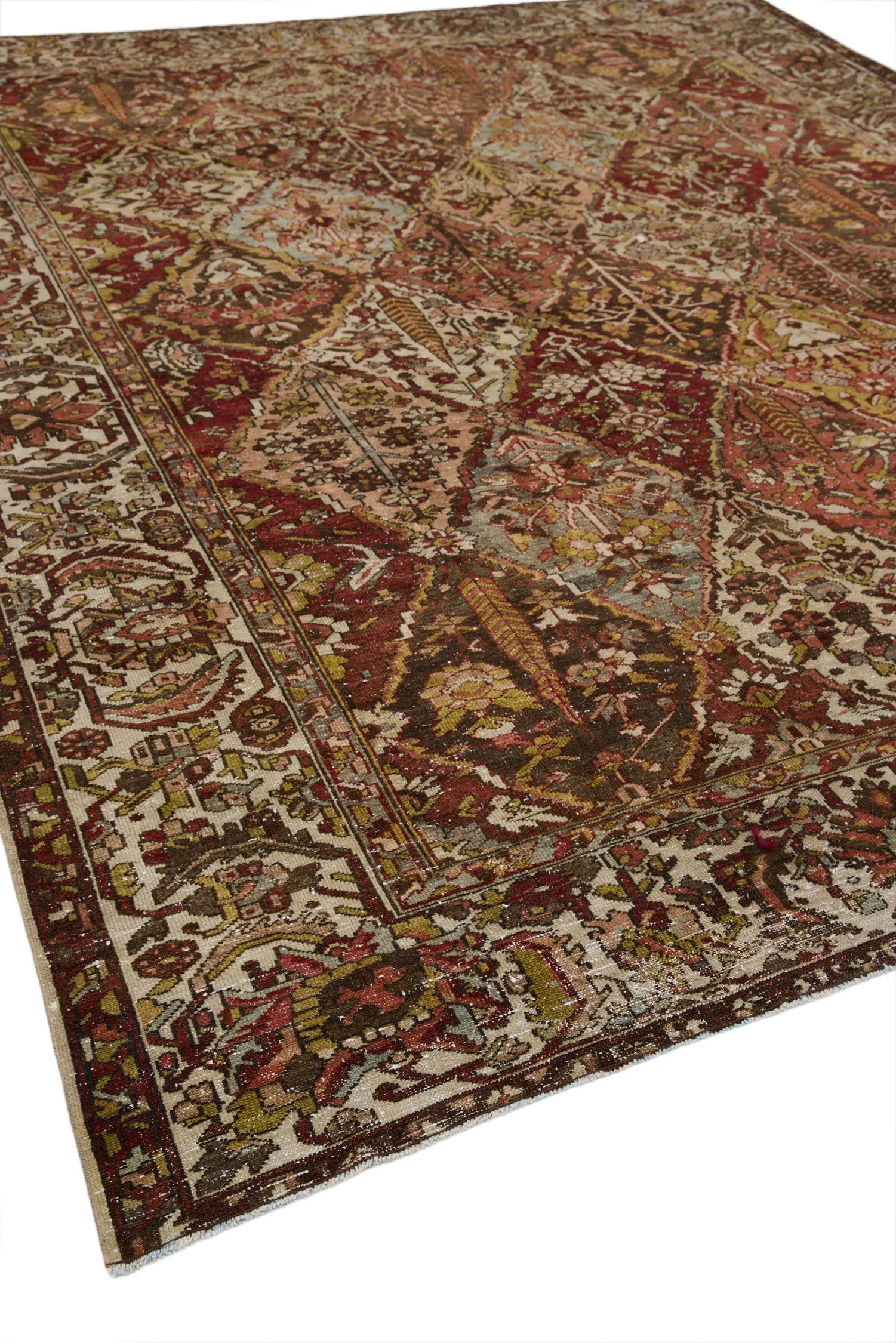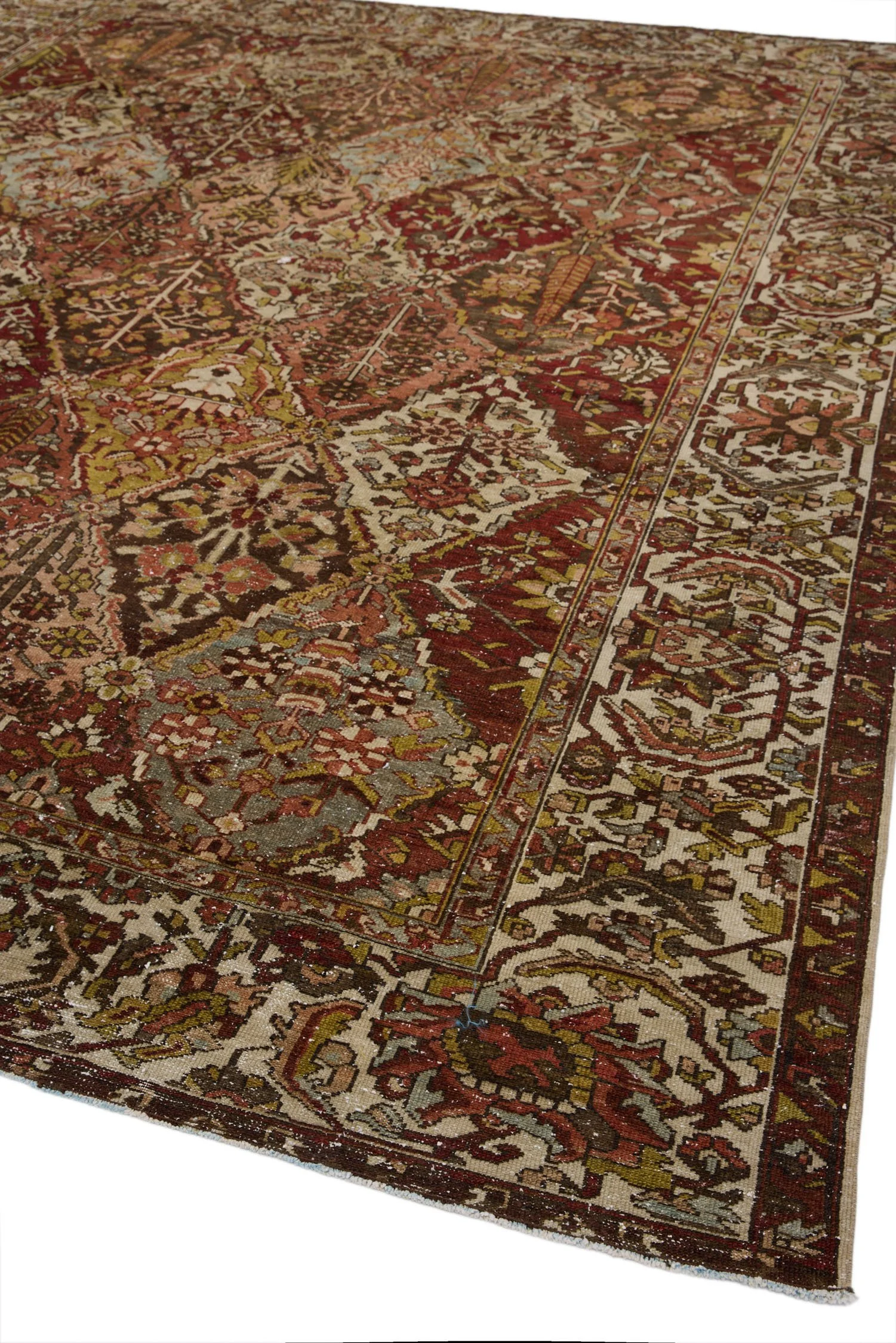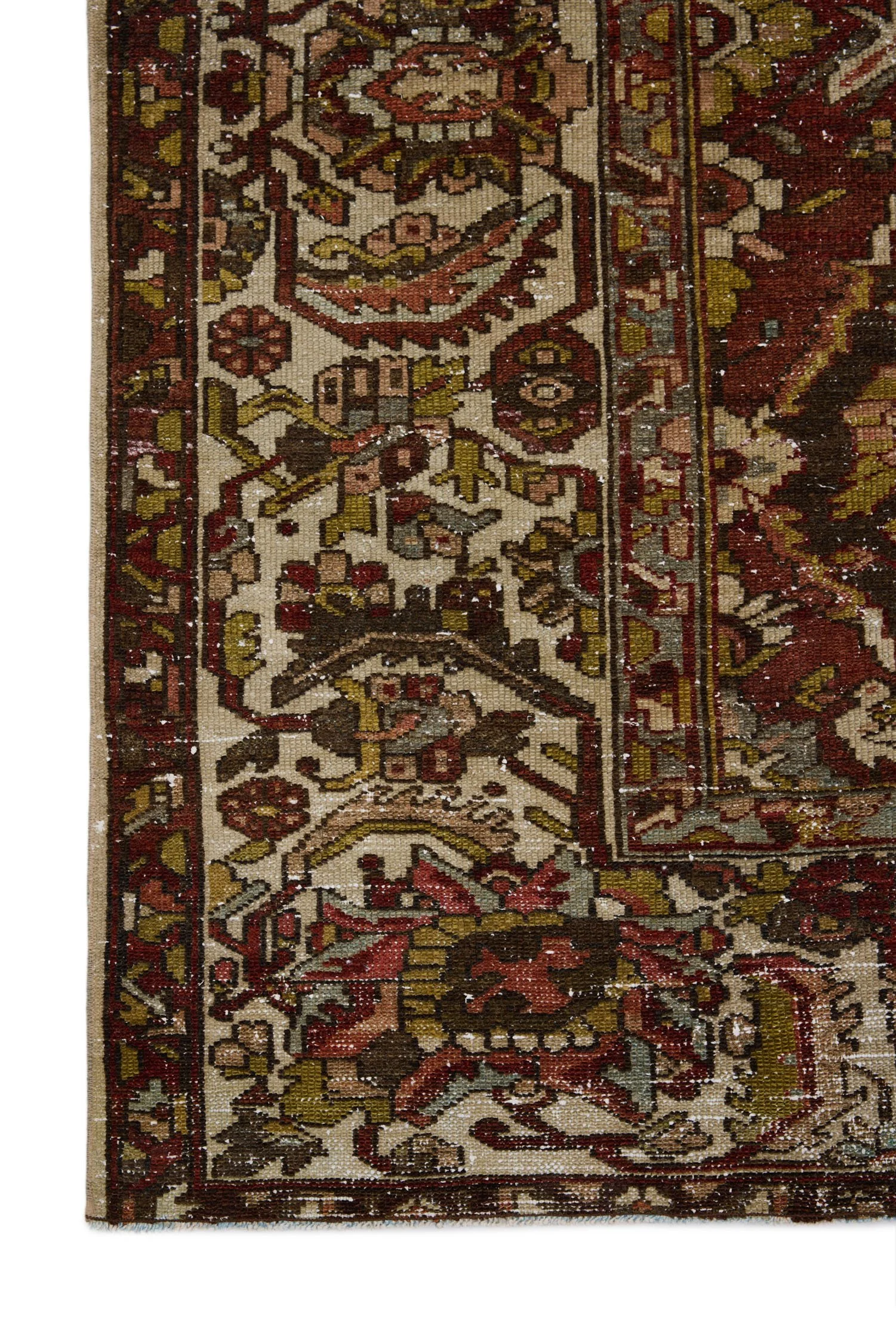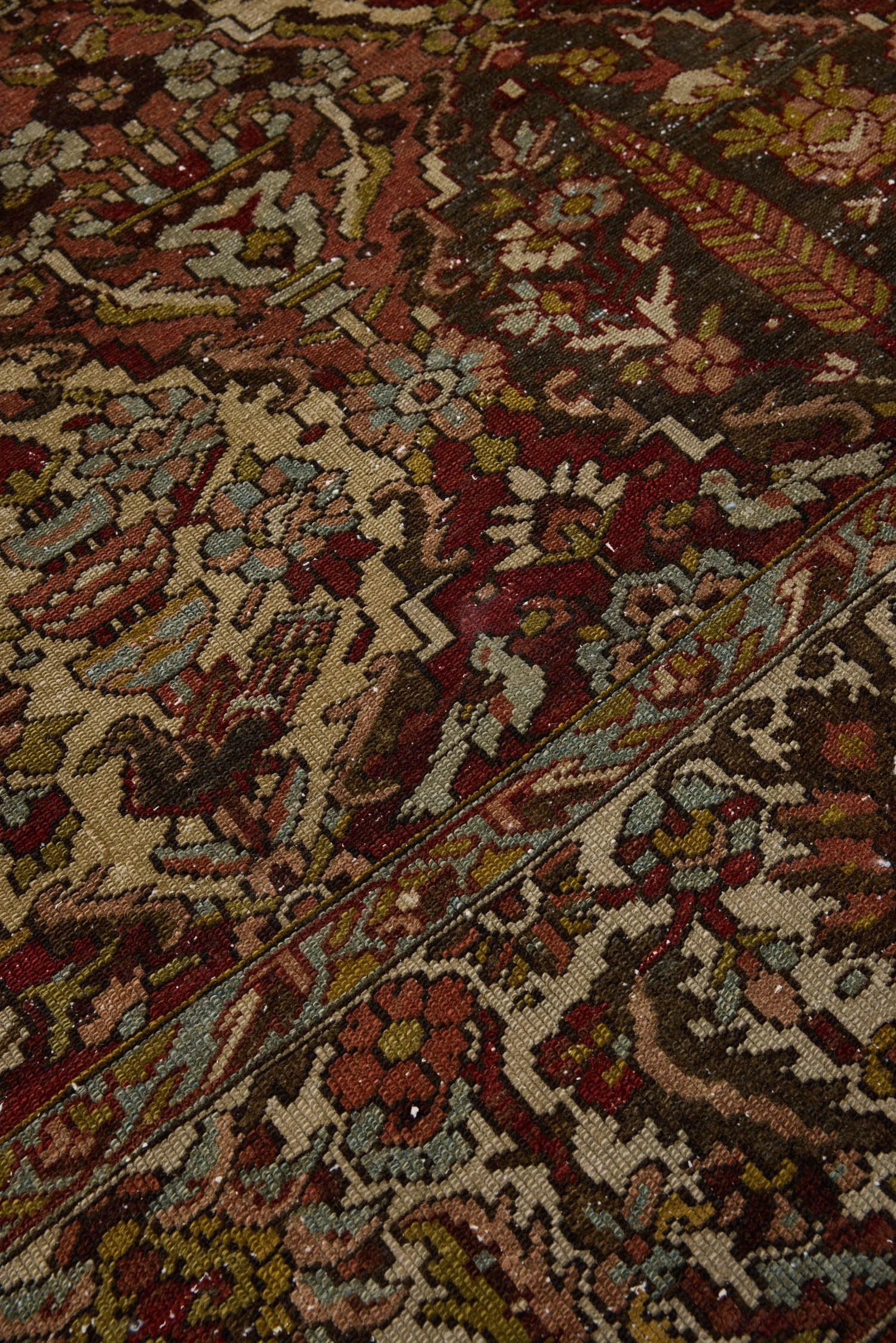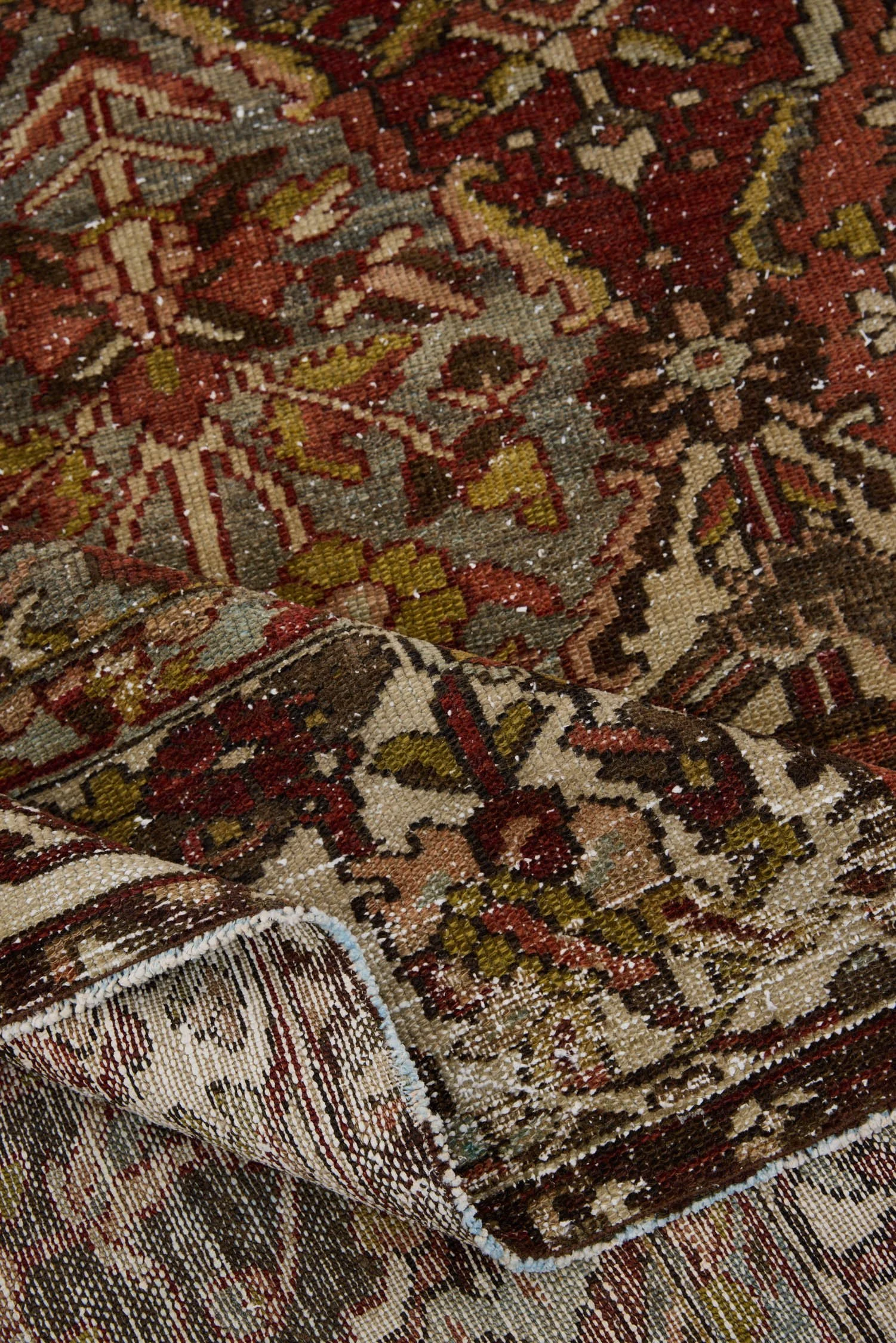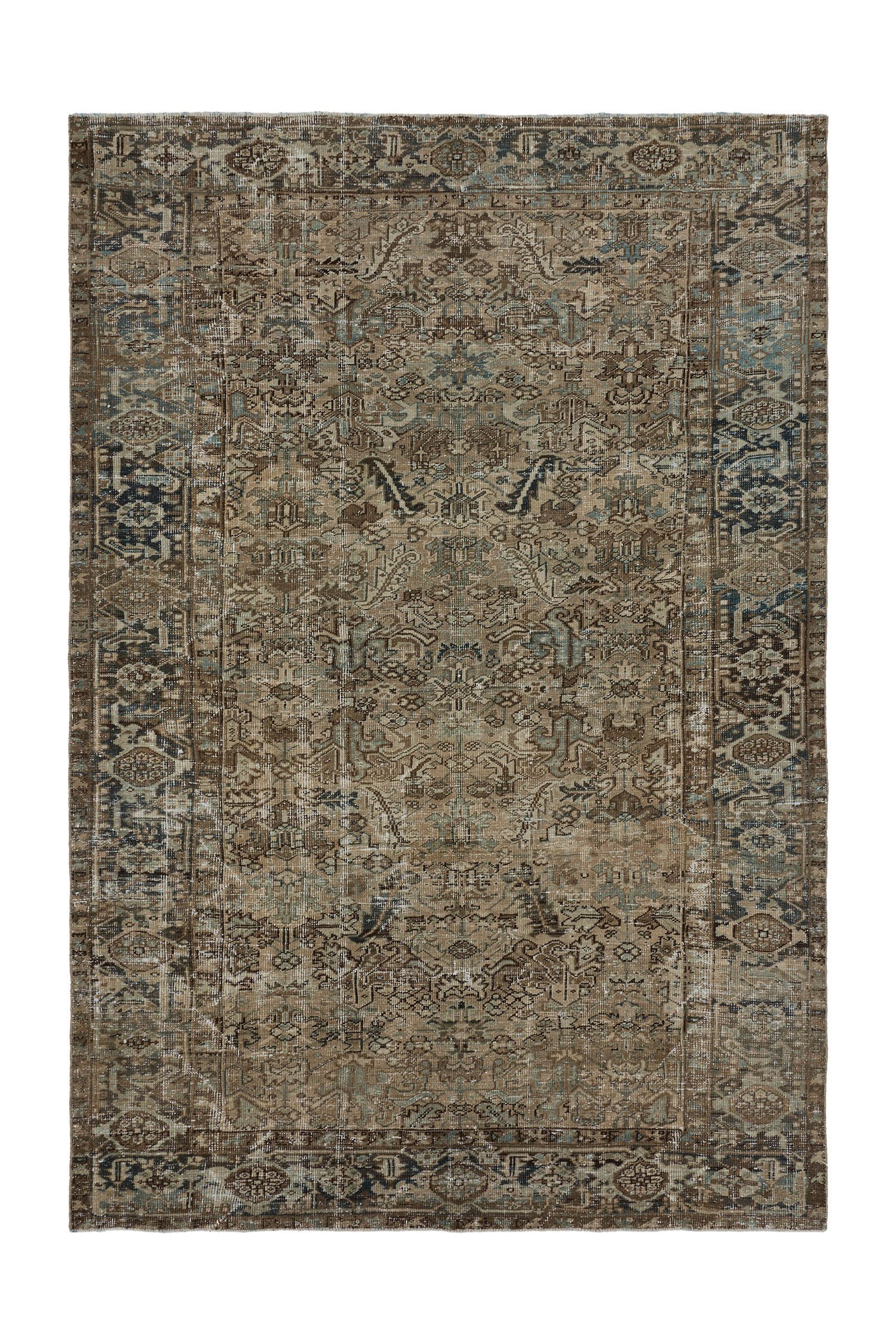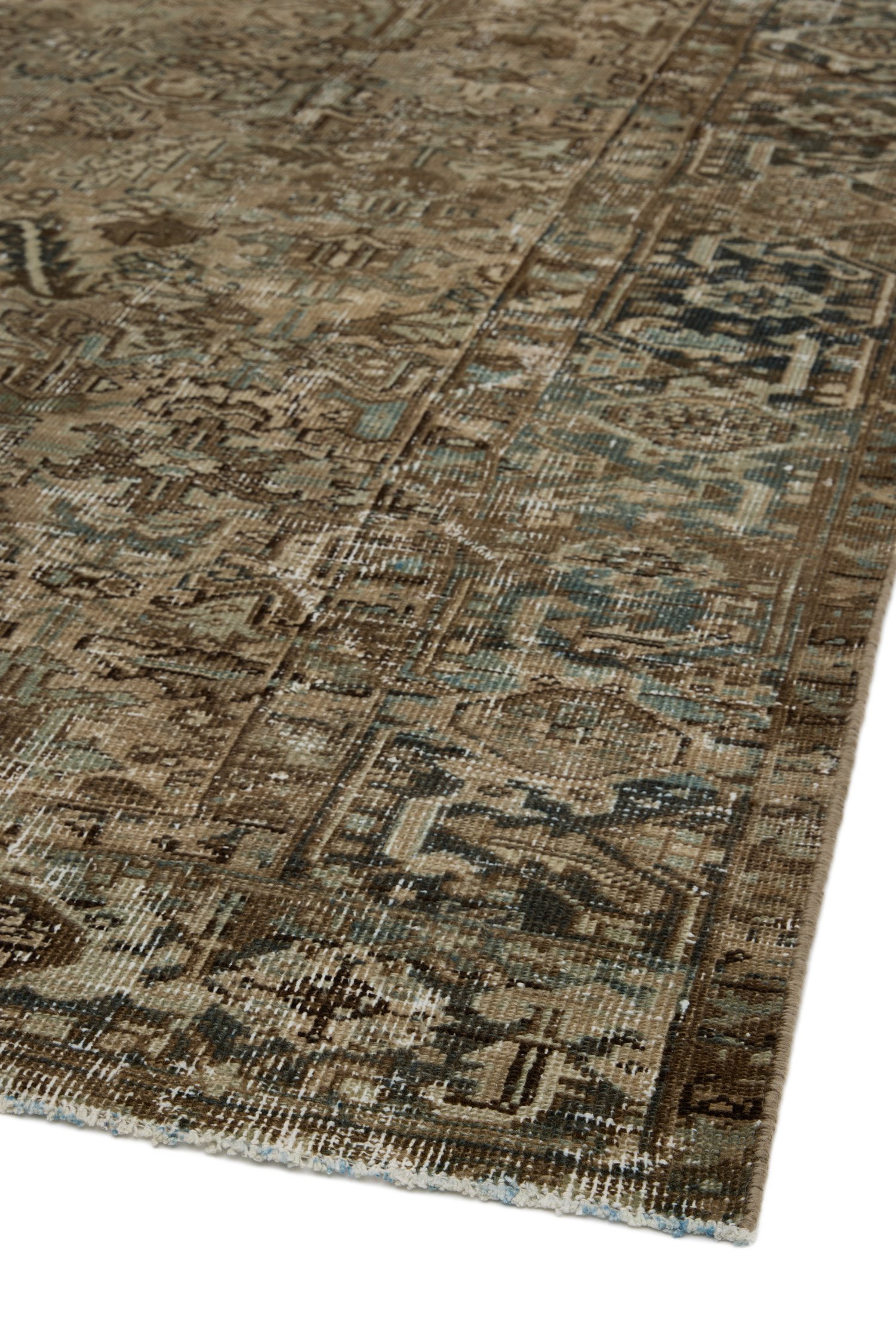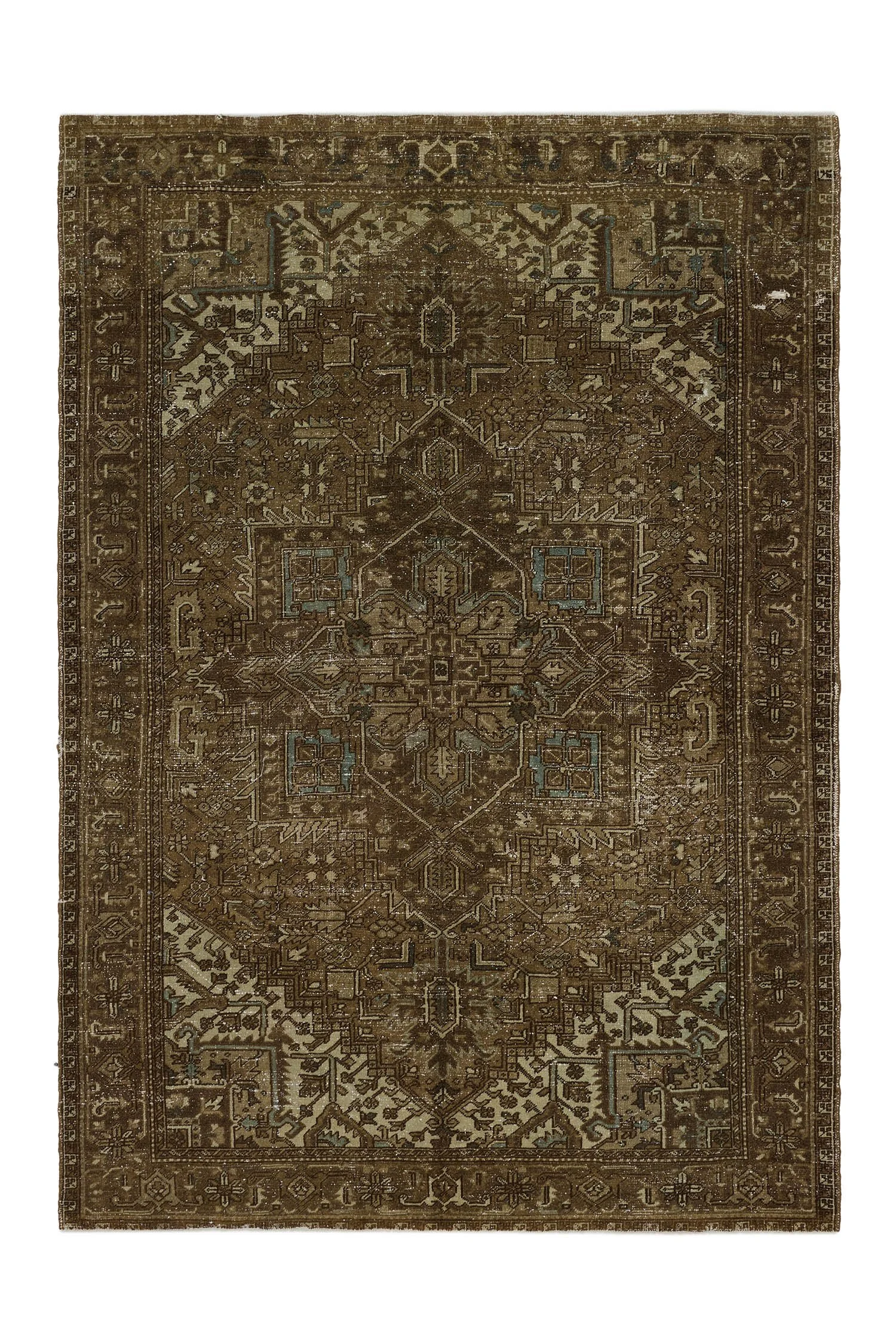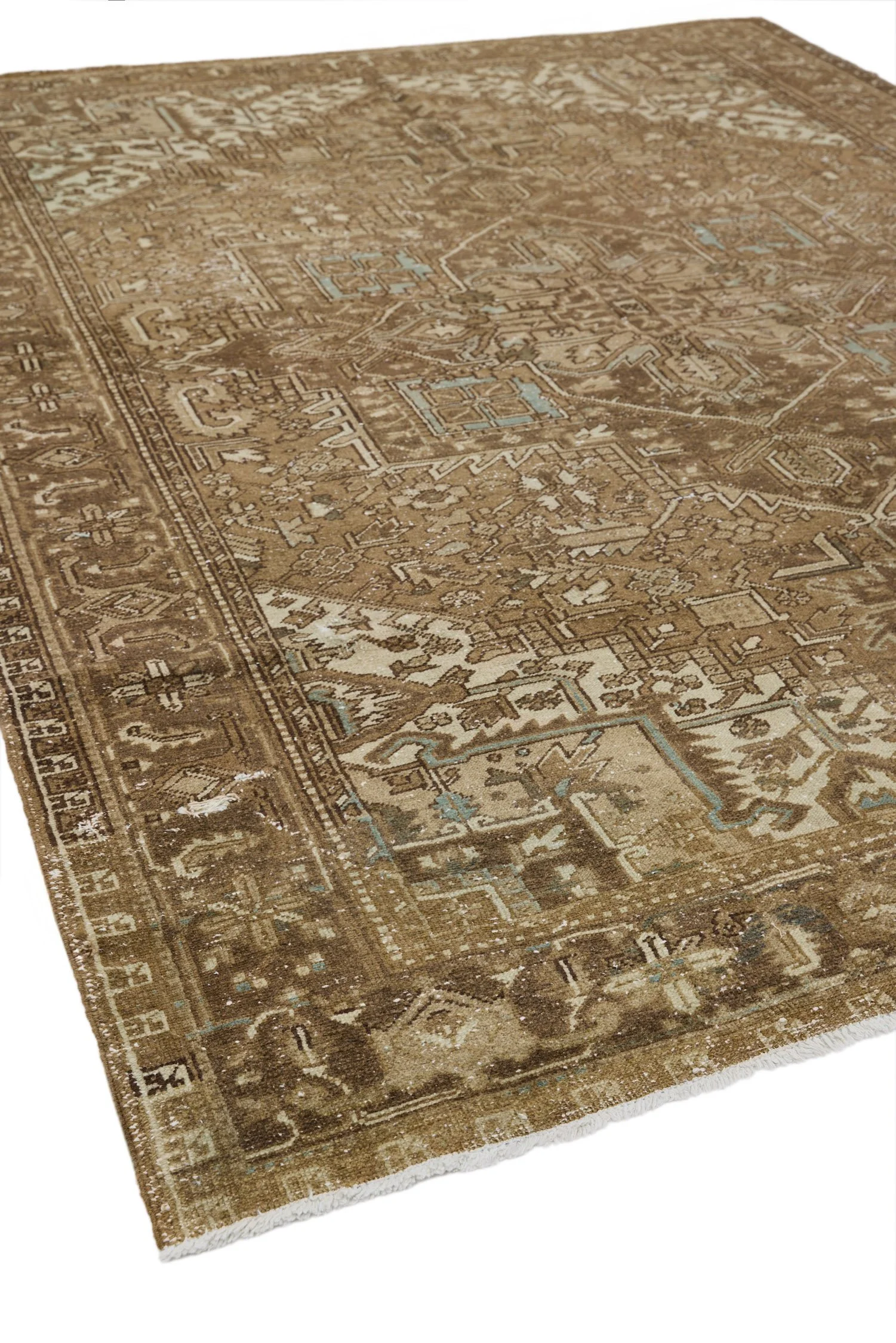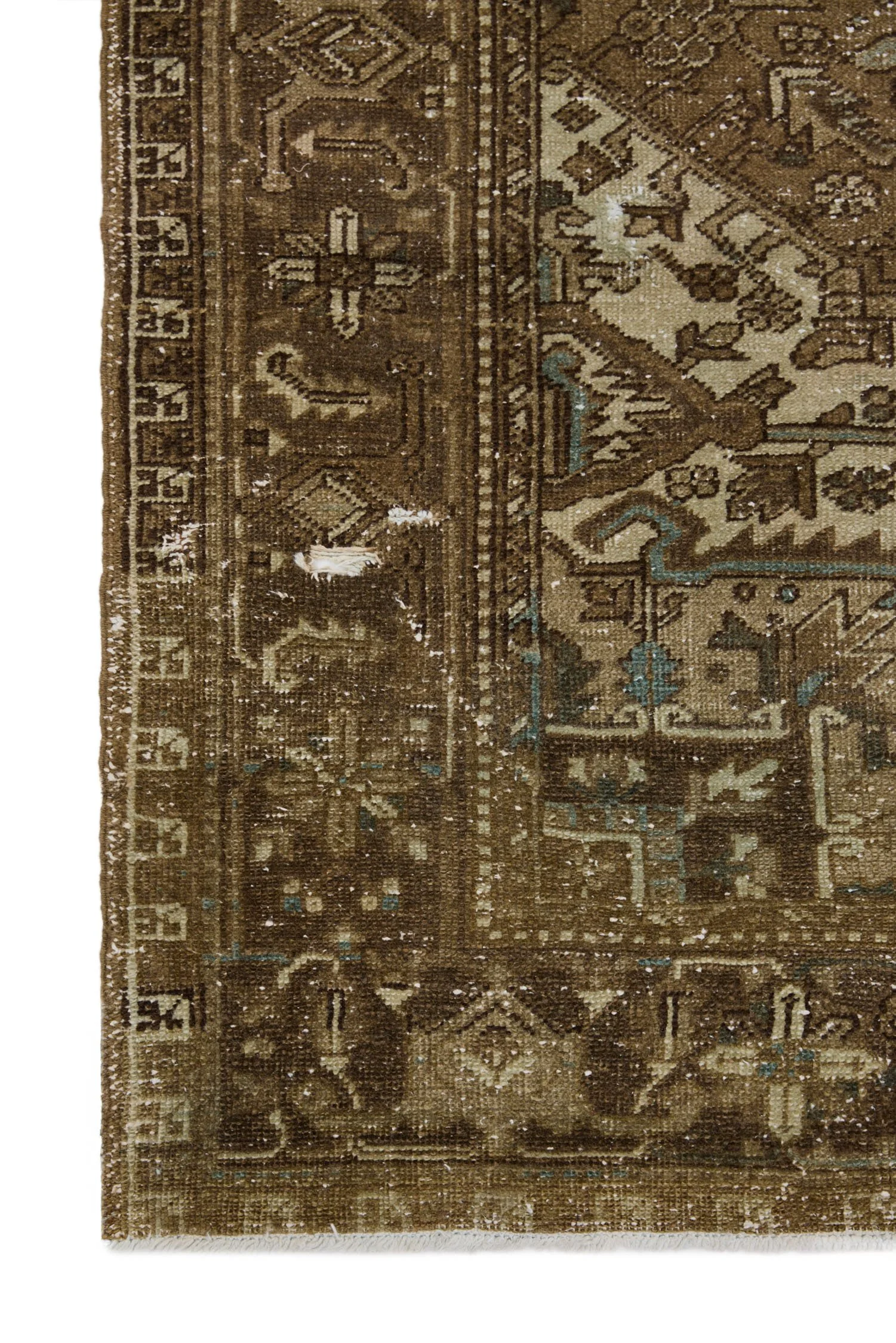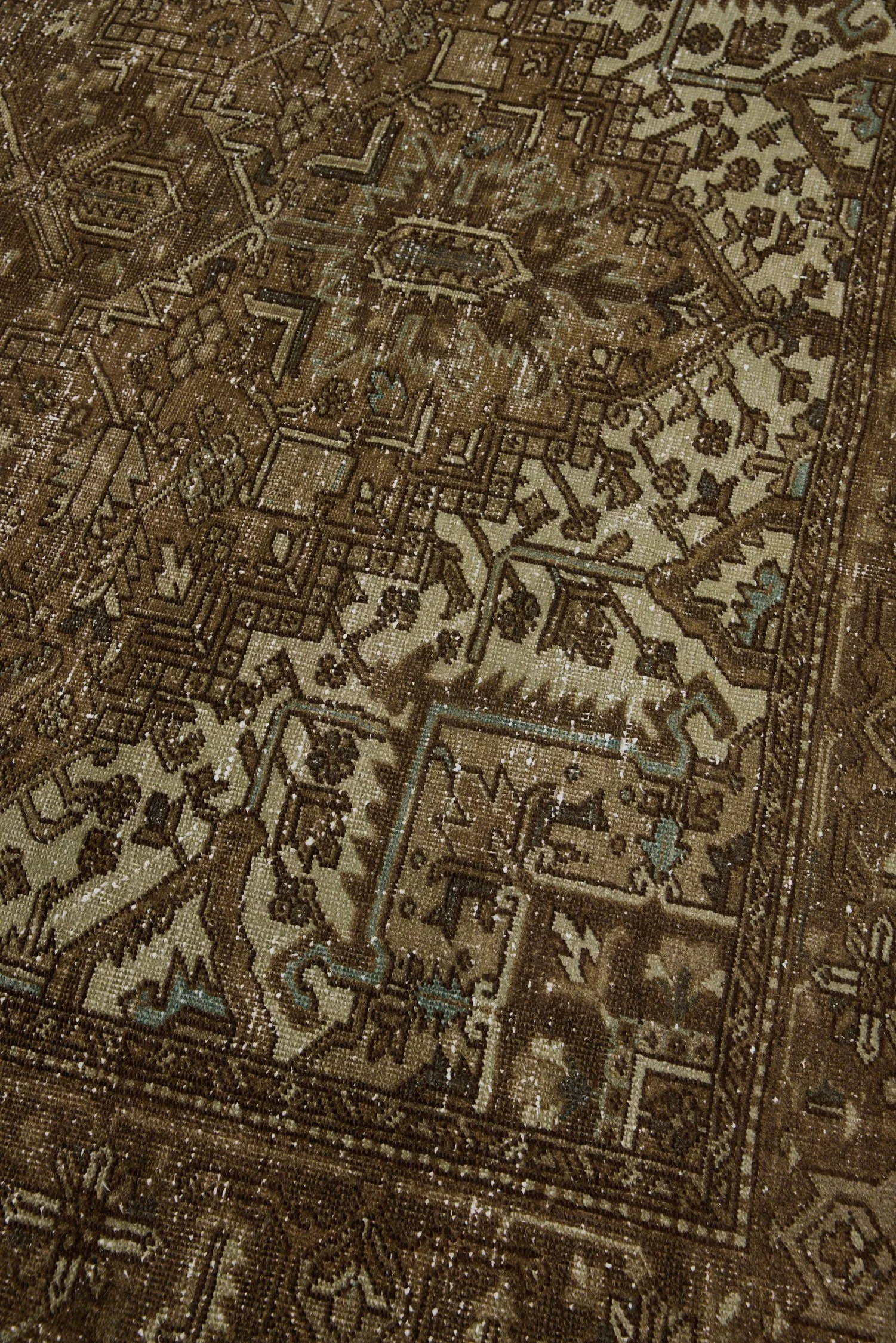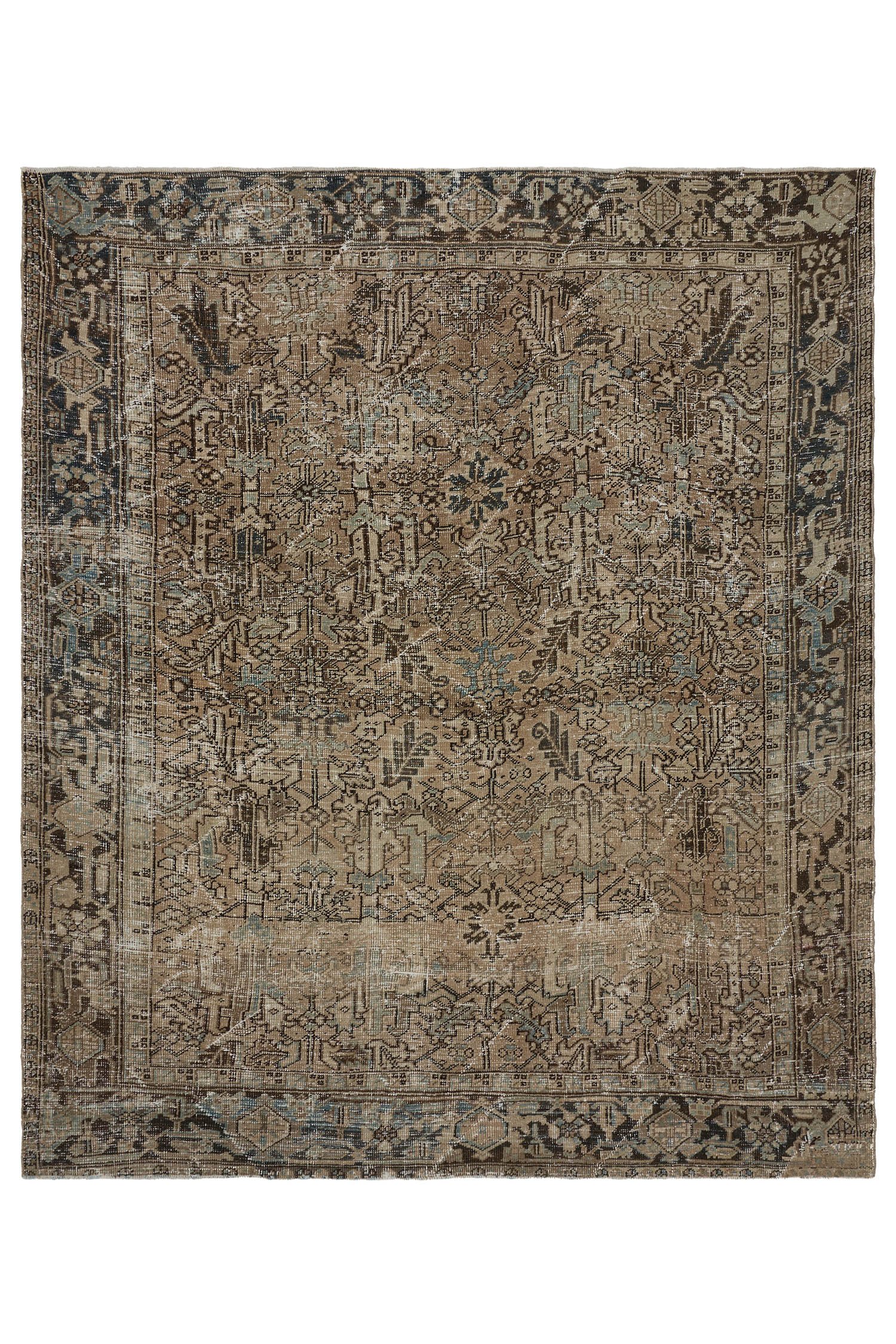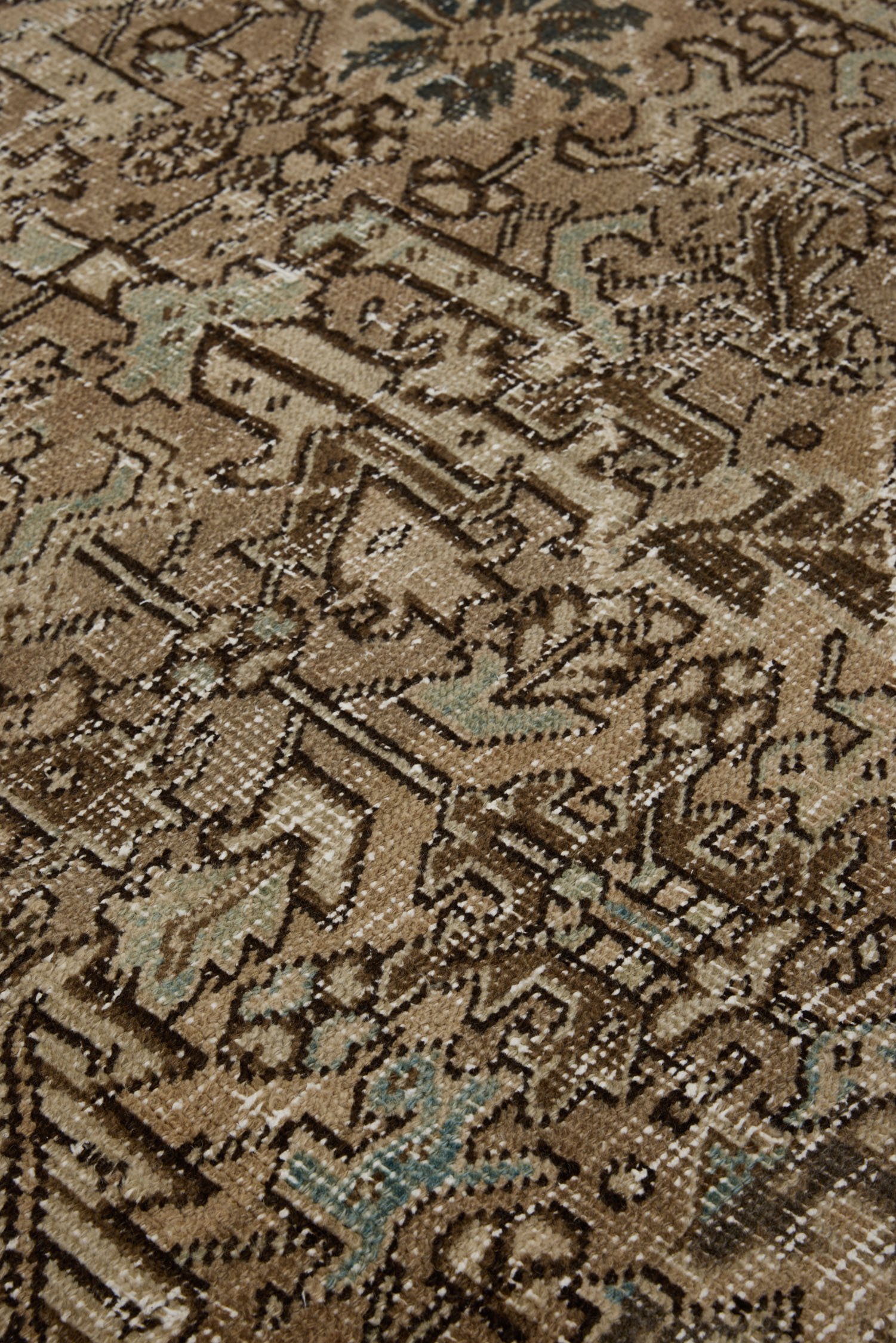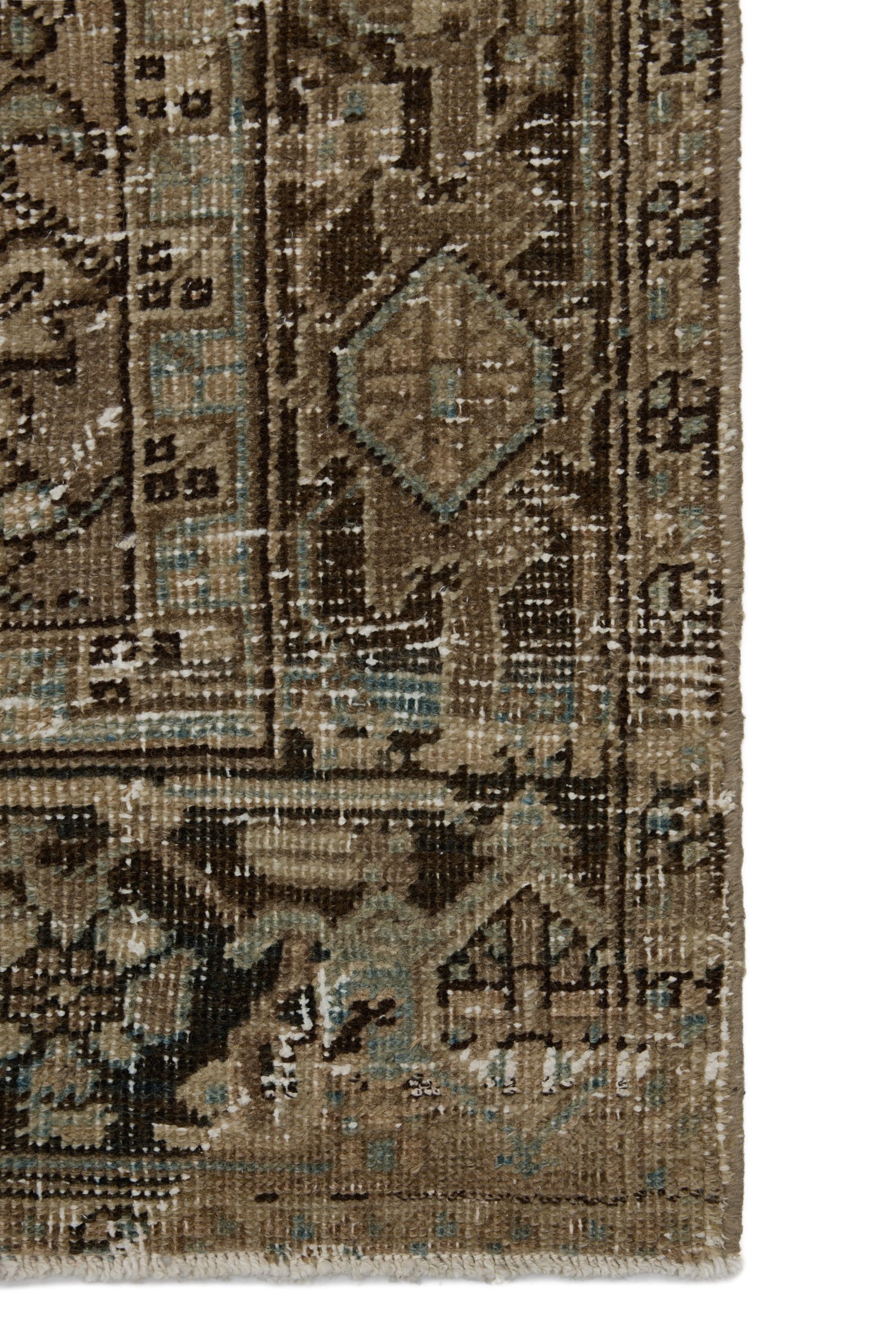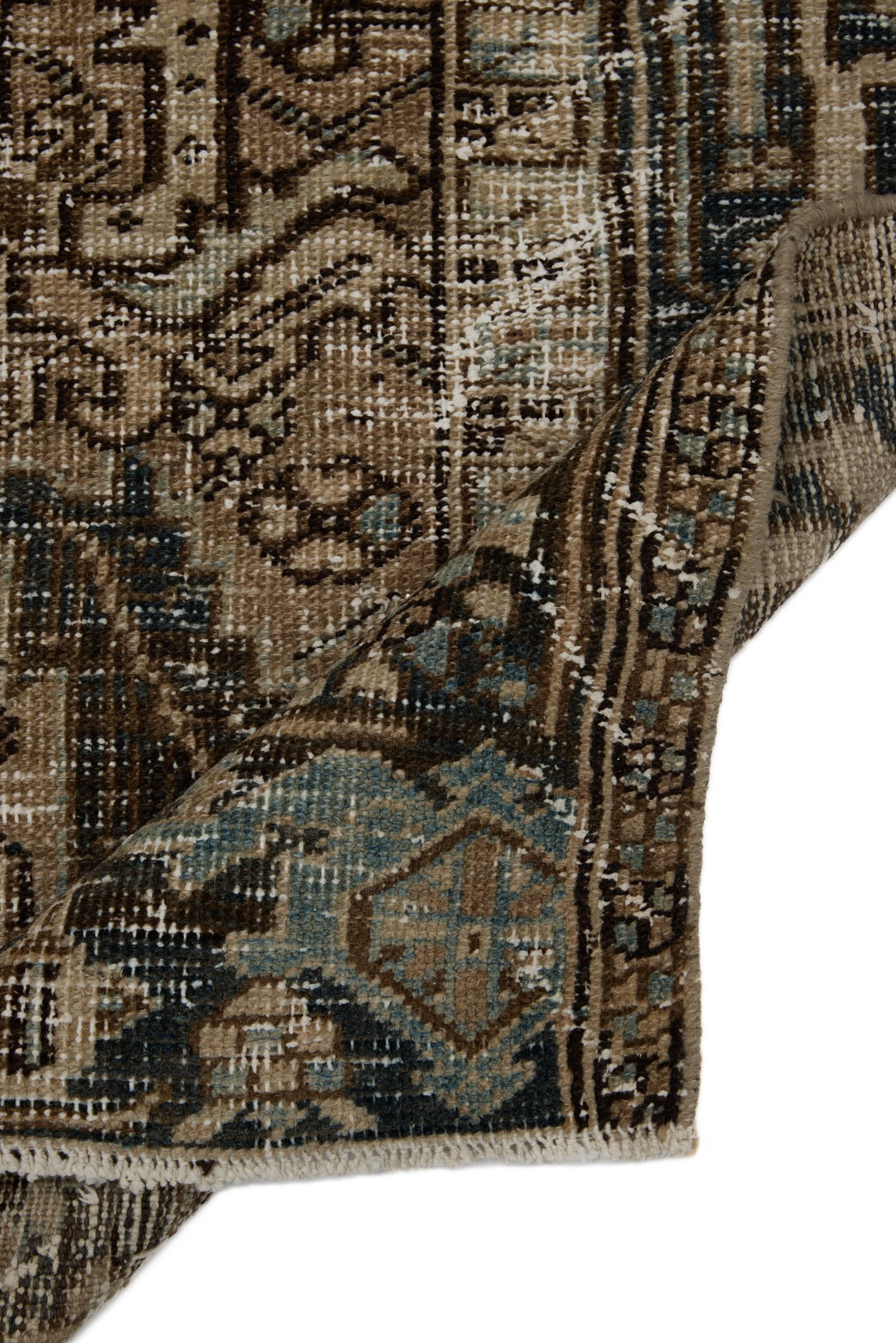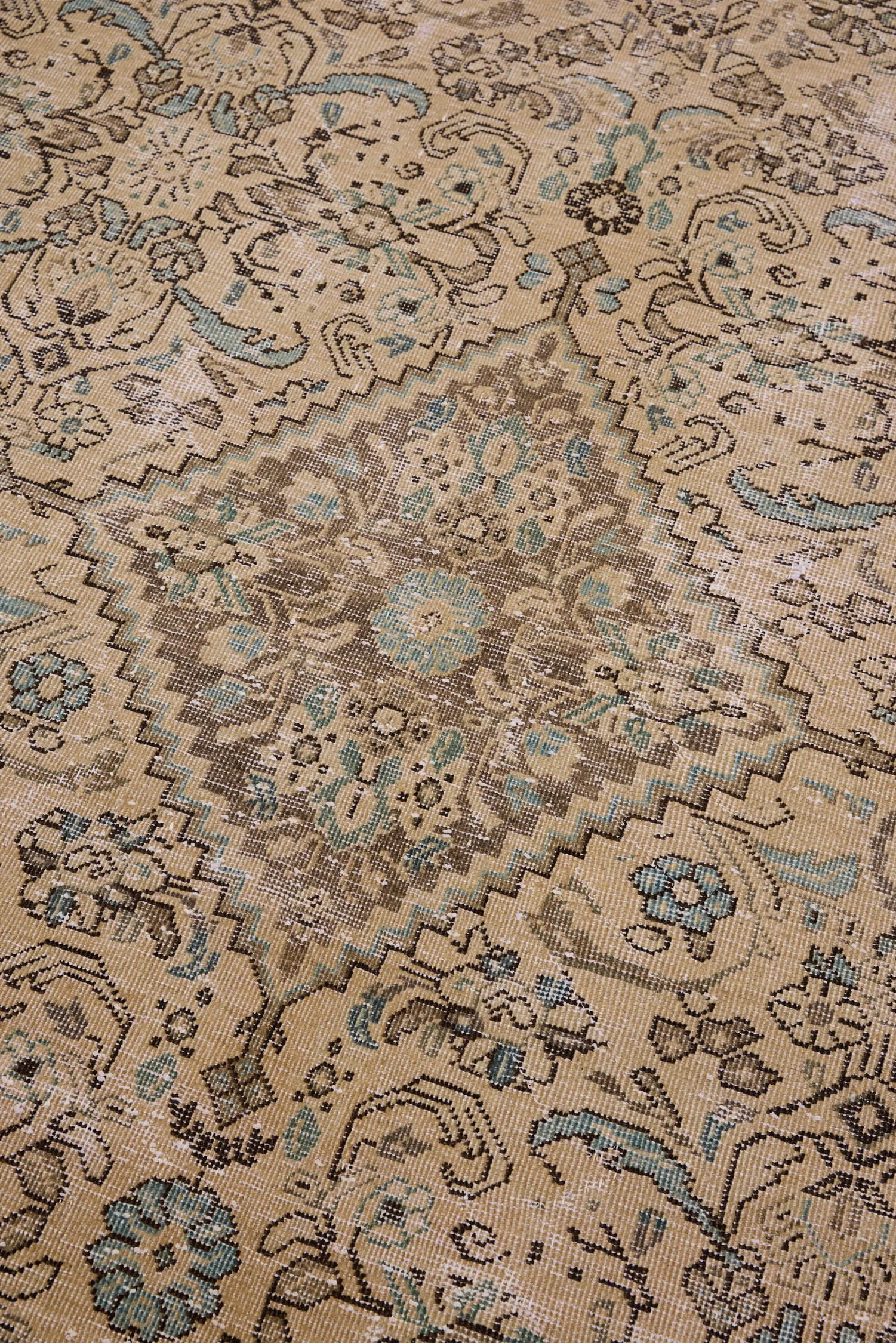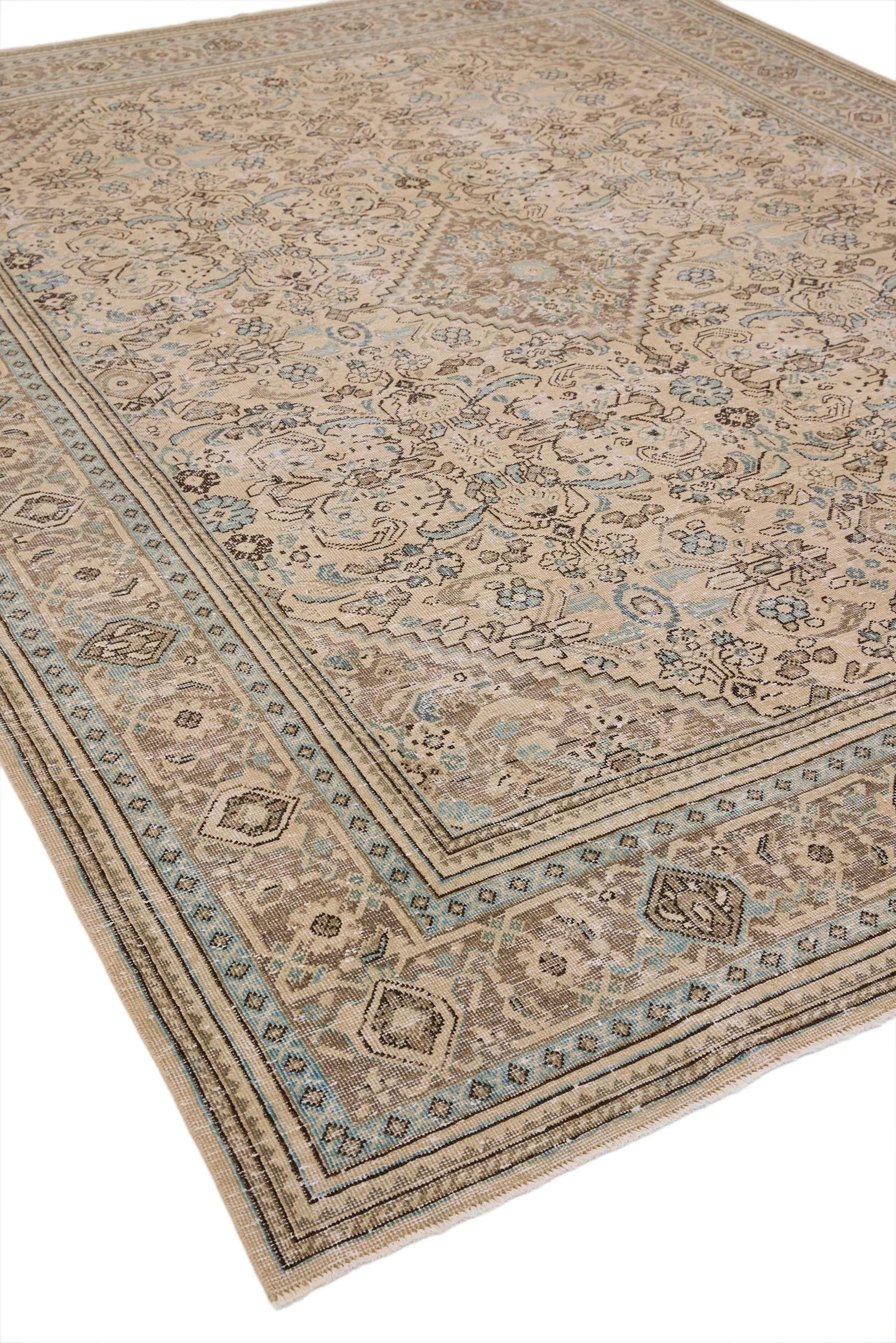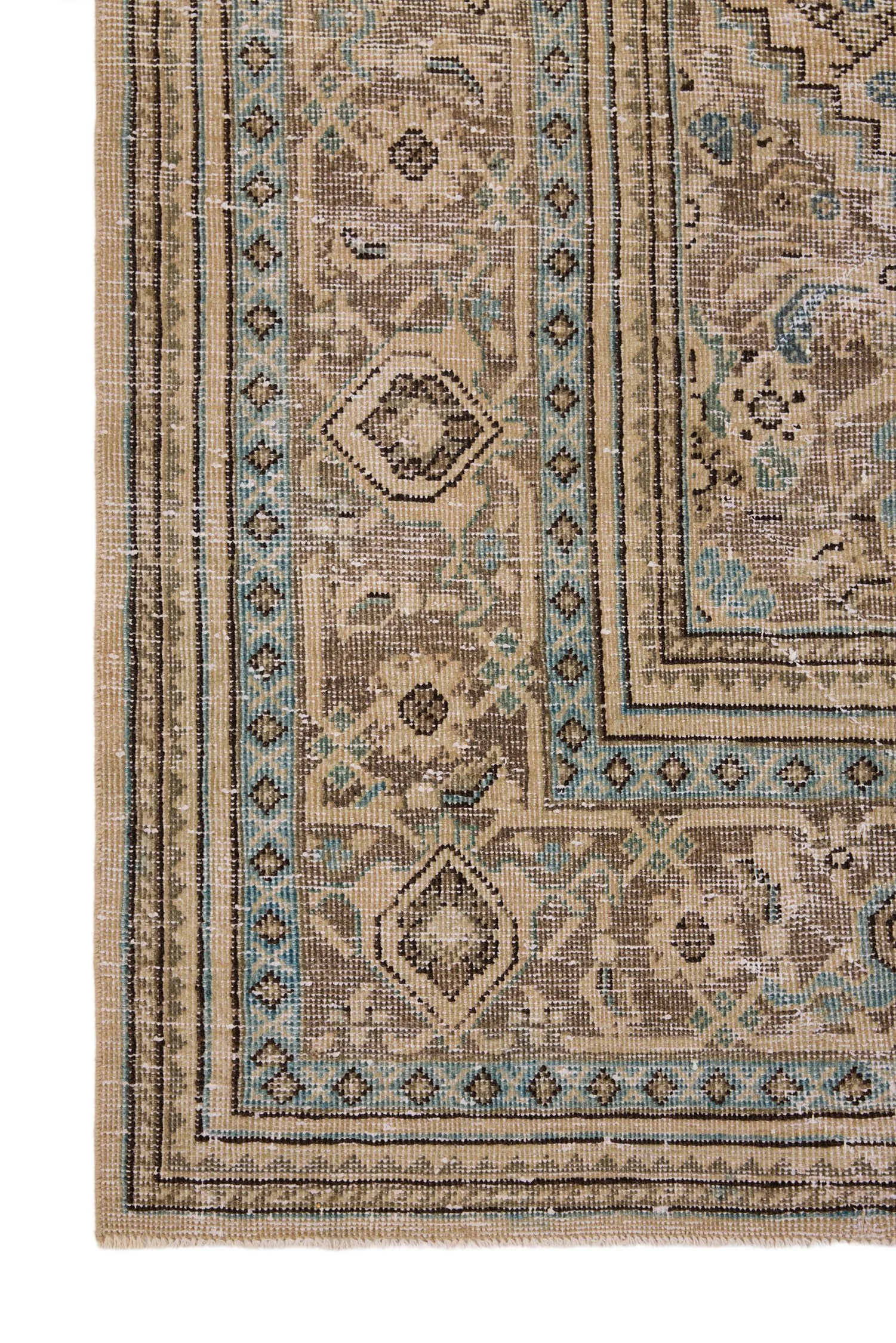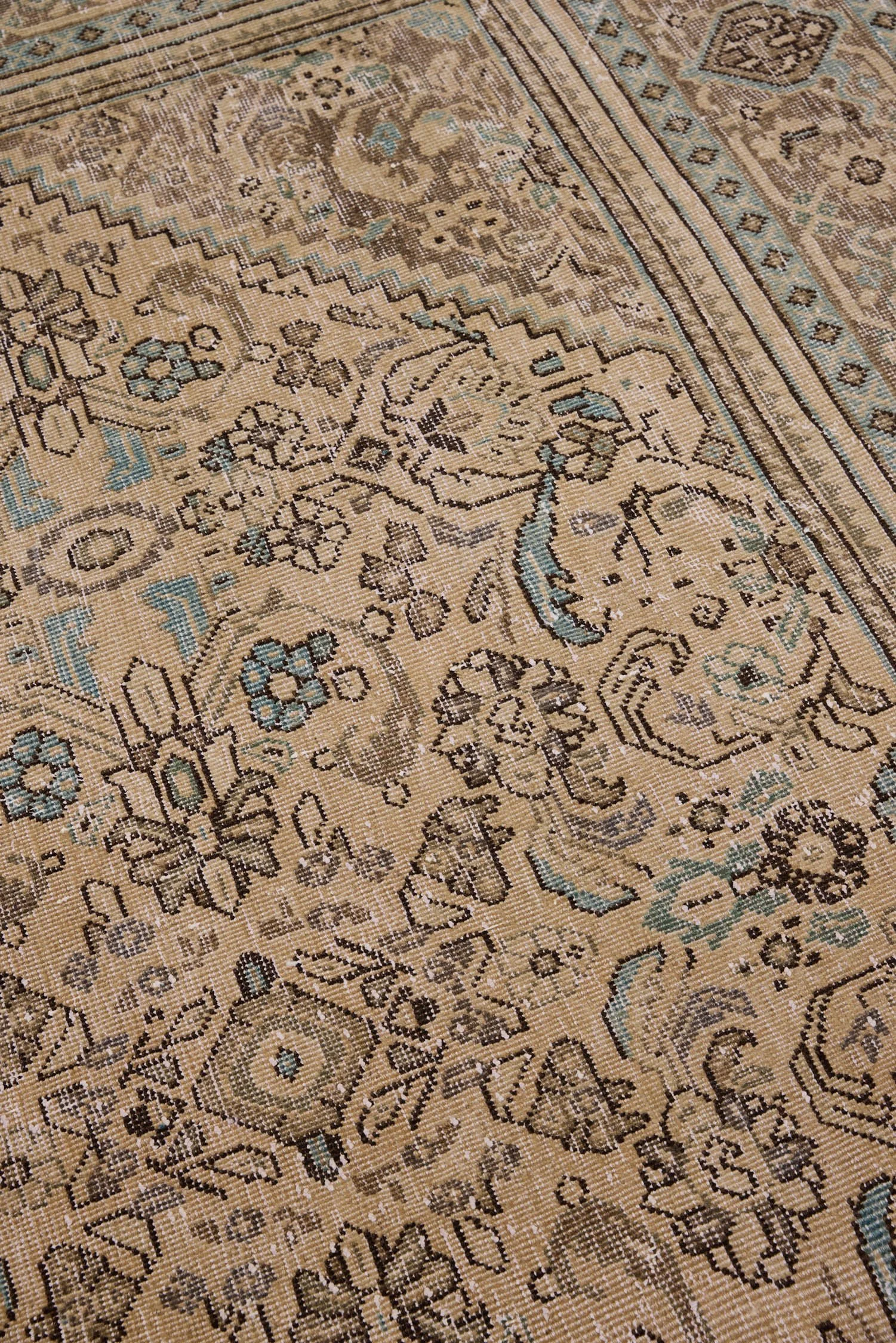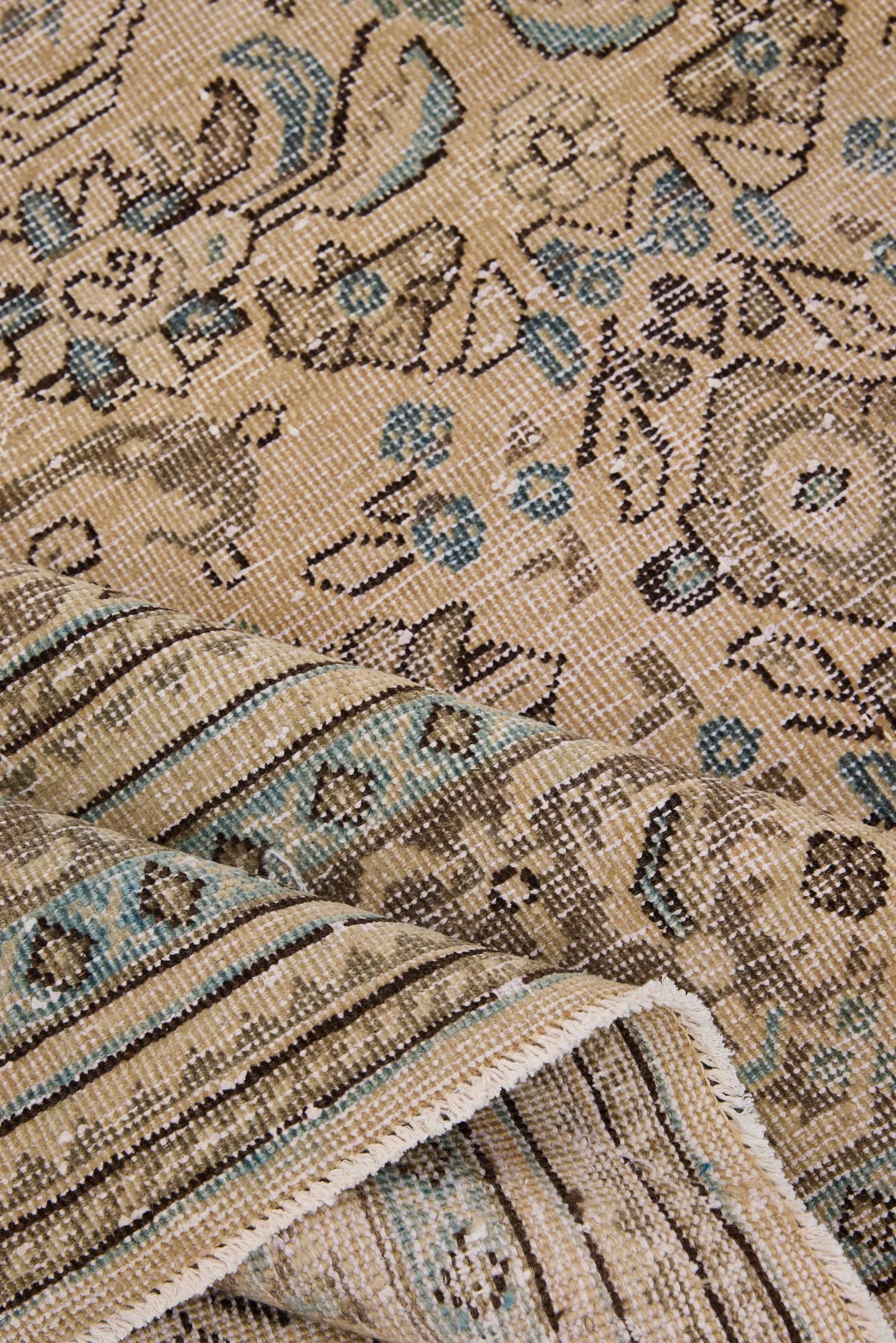Heritage and Craftsmanship
Malayer's weaving tradition during the mid-20th century produced rugs that combined technical competence with artistic individuality. Weavers here worked with design vocabularies passed down through generations while maintaining freedom to interpret patterns according to their own sensibilities. The result was pieces that feel both familiar and personal, recognizable as products of their region while bearing the marks of individual hands and creative choices.
Design Elements
The floral lattice spreads across the field in what has become, through wear, an almost abstract composition. Where the pattern once stood in clear definition, natural aging has created a soft blur, boundaries between motifs and ground dissolving into gradations. Teal highlights emerge within this muted ground like memories surfacing, their presence adding visual interest without disrupting the overall restraint. The ghostly depth created by the worn surface gives the rug a quality that pristine examples cannot achieve, pattern existing as suggestion rather than declaration.
Placement
At 8'0" x 10'11", this rug anchors living spaces, dining rooms, or bedrooms where substantial scale enhances rather than overwhelms. The distressed quality and earthy palette of camel, taupe, and washed teal work within interiors that embrace patina and imperfection. Its misted, painterly surface brings visual depth to spaces without demanding attention, functioning as a foundation that supports other design elements. The worn character makes it particularly effective in rooms mixing vintage and contemporary furnishings.
Care Recommendations
To preserve the rug's beauty:
Rotate periodically for even wear
Vacuum regularly using a suction-only setting
Address spills immediately by blotting, never rubbing
Professional cleaning recommended annually
Avoid direct sunlight to maintain color integrity
Distressed Malayer rugs with this level of natural aging appeal to those who find beauty in transience, who appreciate how use and time collaborate to create surfaces no deliberate design could replicate. The misted quality, the way patterns dissolve into atmosphere, resonates with contemporary design sensibilities that value authenticity over perfection. These pieces bring history and texture to interiors without the formality that pristine antique textiles can carry, their worn surfaces speaking to utility and endurance rather than precious preservation.


